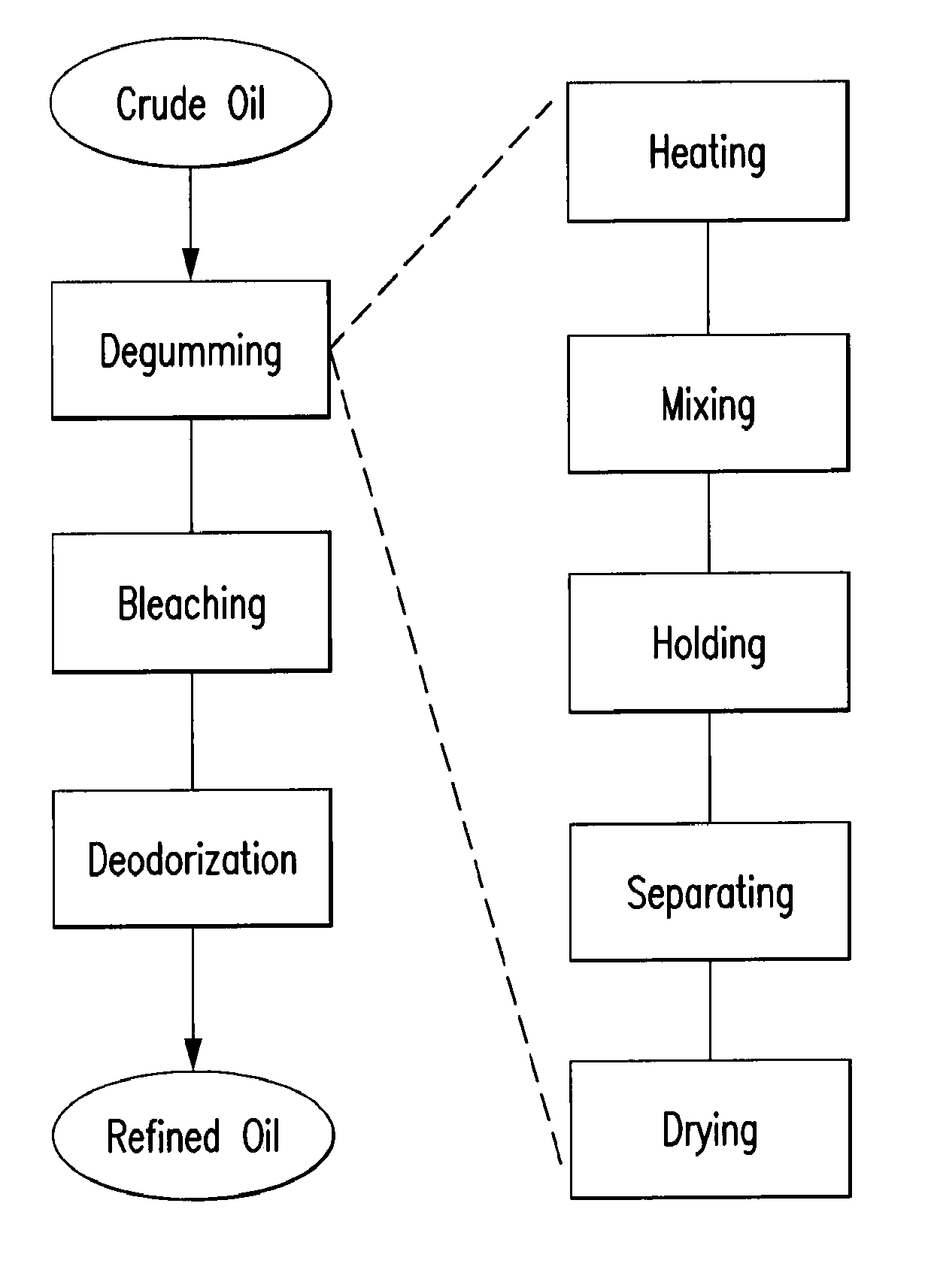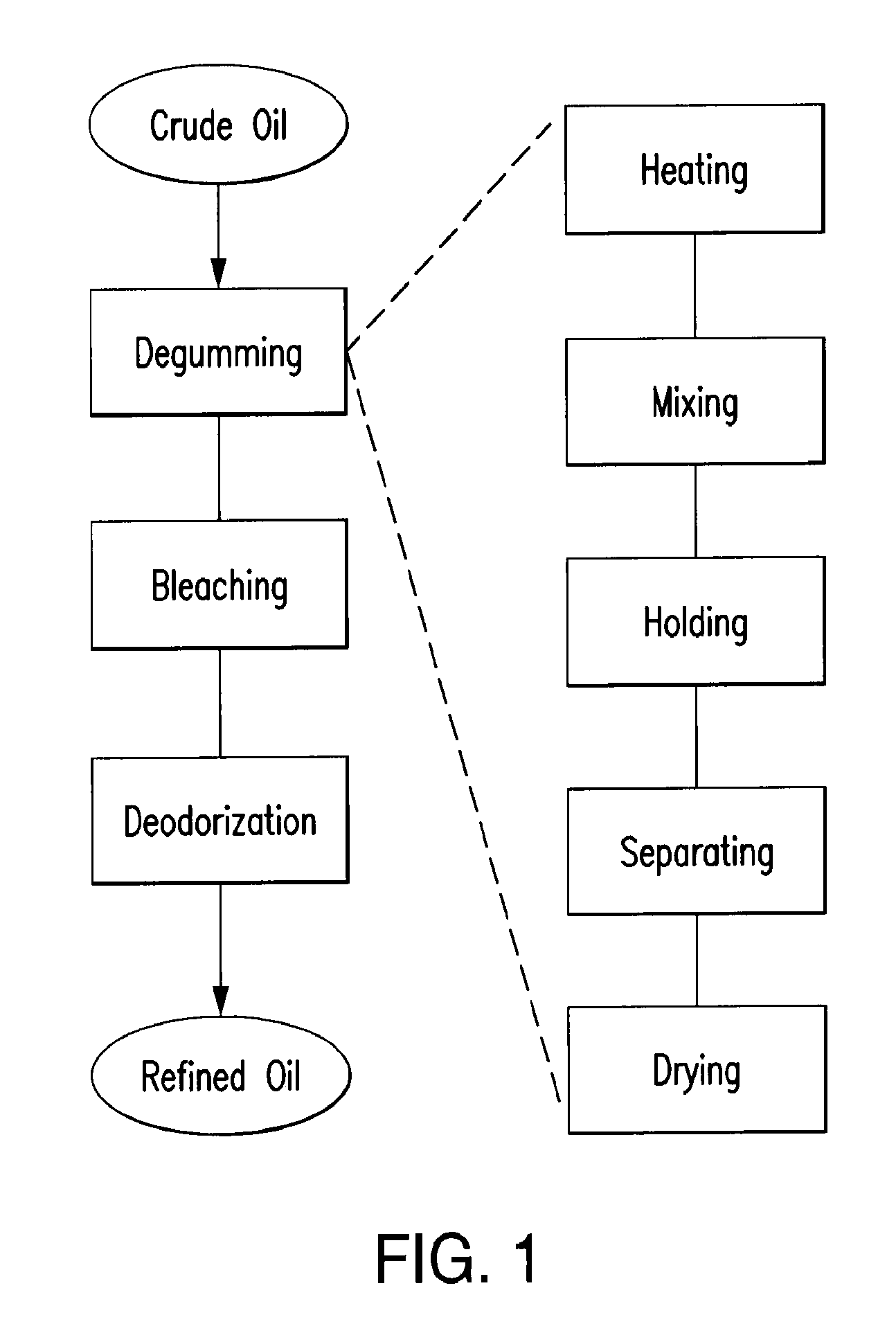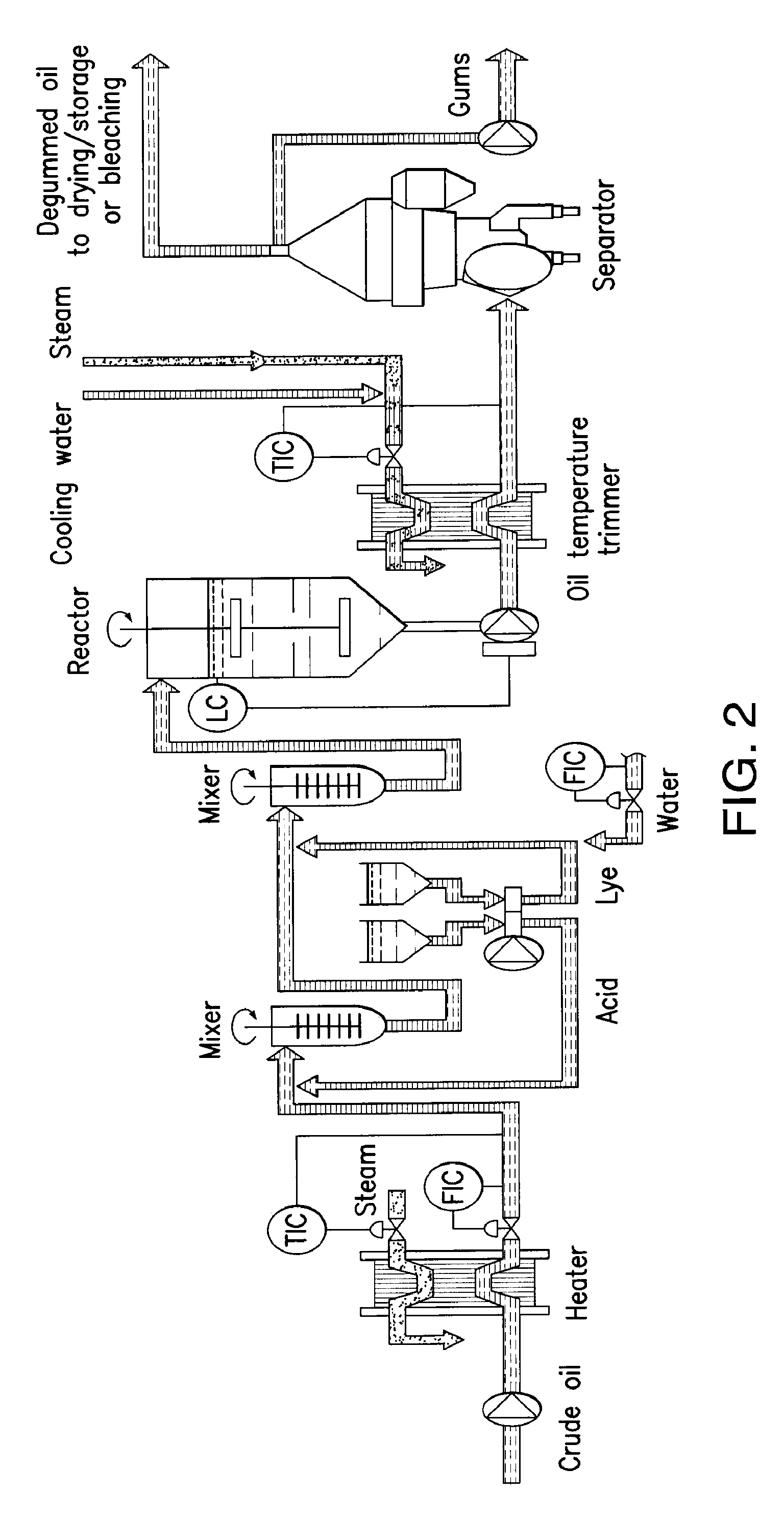Oil degumming methods
a phospholipase and enzyme technology, applied in the field of phospholipase enzymes and polynucleotides encoding enzymes, can solve the problems of insufficient removal or reaction methods of non-hydratable phospholipids present in oil, the protective coating of seeds, and the loss of phospholipids associated with the refining of vegetable oils, etc., to achieve the effect of enhancing the reaction rate of a phospholipas
- Summary
- Abstract
- Description
- Claims
- Application Information
AI Technical Summary
Benefits of technology
Problems solved by technology
Method used
Image
Examples
example 1
Blast Program Used for Sequence Identify Profiling
[0756]This example describes an exemplary sequence identity program to determine if a nucleic acid is within the scope of the invention. An NCBI BLAST 2.2.2 program is used, default options to blastp. All default values were used except for the default filtering setting (i.e., all parameters set to default except filtering which is set to OFF); in its place a “-F F” setting is used, which disables filtering. Use of default filtering often results in Karlin-Altschul violations due to short length of sequence. The default values used in this example:
“Filter for low complexity: ON> Word Size: 3> Matrix: Blosum62> Gap Costs: Existence:11> Extension:1”
[0757]Other default settings were: filter for low complexity OFF, word size of 3 for protein, BLOSUM62 matrix, gap existence penalty of −11 and a gap extension penalty of −1. The “-W” option was set to default to 0. This means that, if not set, the word size defaults to 3 for proteins and 1...
example 2
Modifications to a PLC Enzyme (ePLC)
[0758]This example describes exemplary protocols for making PLC enzymes of this invention, including PI-PLC enzymes of this invention. This example describes enzymes that can be used to practice this invention, e.g., used in combination with PLC enzymes of this invention (e.g., an enzyme having a sequence as set forth in SEQ ID NO:8, or as described in Table 12 to 15). Enzymes that can be used to practice this invention, e.g., in combinations or mixtures comprising PLC enzymes of this invention, include any phospholipase enzyme, including an enzyme having a sequence as set forth in Table 8 or Table 9, or described in WO 2008 / 036863. In alternative embodiments, enzymes that can be used to practice this invention include polypeptides having a sequence as set forth in SEQ ID NO:2 and / or SEQ ID NO:4, and variants thereof as described in Tables 8 and 9, below.
[0759]Phospholipase C enzyme having a sequence as set forth in SEQ ID NO:2 (encoded e.g. by SE...
example 3
Making Exemplary Phosphatidylinositol-Specific Phospholipase C (PI-PLC) Enzymes of the Invention
[0816]This example describes exemplary phosphatidylinositol-specific phospholipase C (PI-PLC) enzymes of the invention, including the polypeptide having the sequence as set forth in SEQ ID NO:8, and the polypeptides having a PI-PLC activity as described in Tables 12 to 15; and exemplary methods for making and using them, and assays for determining their phospholipase activity.
[0817]In alternative embodiments, the invention provides polypeptides having a PI-PLC enzyme activity. In some embodiments, these polypeptides were constructed by the following methods:
[0818]For this series of embodiments, the polypeptide having the amino acid sequence of SEQ ID NO:6 (encoded e.g., by SEQ ID NO:5) was selected as the “parent” or “wild-type” sequence for further modification (or “evolution”); in particular, the underlined (see below) subsequence of SEQ ID NO:6 (or SEQ ID NO:5) was used with the additi...
PUM
 Login to View More
Login to View More Abstract
Description
Claims
Application Information
 Login to View More
Login to View More - R&D
- Intellectual Property
- Life Sciences
- Materials
- Tech Scout
- Unparalleled Data Quality
- Higher Quality Content
- 60% Fewer Hallucinations
Browse by: Latest US Patents, China's latest patents, Technical Efficacy Thesaurus, Application Domain, Technology Topic, Popular Technical Reports.
© 2025 PatSnap. All rights reserved.Legal|Privacy policy|Modern Slavery Act Transparency Statement|Sitemap|About US| Contact US: help@patsnap.com



